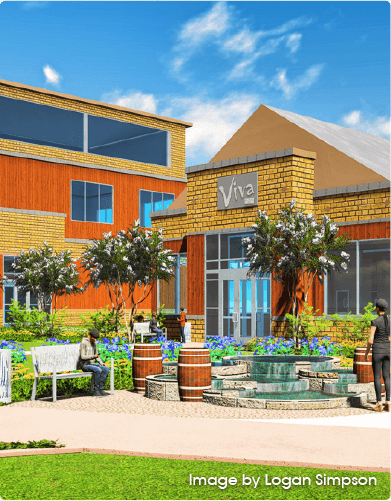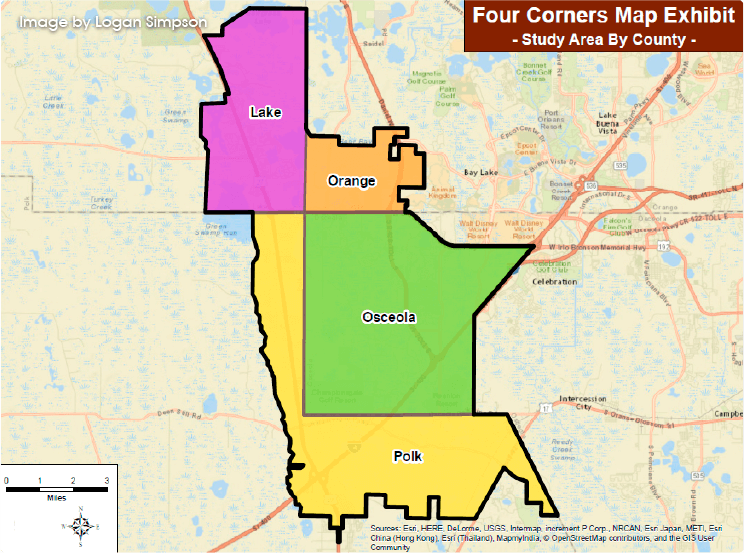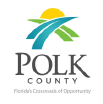About The Initiative
The Four Corners is where Lake, Orange Osceola and Polk counties meet. It is one of the fastest growing areas in Florida, and aspires to be — and be perceived as — a distinct, unique and easily identifiable place. It is served by many governmental jurisdictions—the four counties of course, and three transportation planning organizations, four school districts, two FDOT districts, and two water management districts. Because these jurisdictions have historically had very different approaches to the area, the Four Corners also faces unique challenges.
Four Corners One Vision began as an initiative of the Four Corners Area Council to develop a strategic plan for the area. Over the past two years, it has evolved into a true public private partnership, jointly and equally funded by the Council and the four counties. It is focused not only on planning for the future, but on catalyzing action now to promote coordinated government services and the ability of the Four Corners to function smoothly as a single place.
The activities of the initiative will change over time. Current activities focus on coordinating local planning and development regulations to promote a common sense of place in the Four Corners, and on coordinating the efforts of all the jurisdictions involved in transportation planning to improve the function of the area transportation network. In 2020 the Initiative will also begin organizing to address workforce/affordable housing issues.
Where is the Four Corners?
For example, the Initiative’s discussions of land development codes and public realm design guidelines focus on the West 192 corridor and immediately adjacent parts of the US 27 corridor. Discussions of mobility improvements encompass a larger network of connected transportation facilities that serve the Four Corners.
How The Initiative Is Organized
Steering Committee
A Steering Committee composed of one public and one private sector representative from each of the four counties and a representative of the Four Corners Area Council oversees the initiative. It identifies issues for action by the initiative, makes recommendations, and monitors progress. The Steering Committee meets every other month.
Technical Committee
Staff designated by each of the four counties serve on the Technical Committee. They provide analysis and develop tools to implement coordination among governments and agencies in the Four Corners. Membership on the Technical Committee varies depending on the current focus of the initiative’s work. Technical Committee members meet as needed to move the work of the initiative forward.
Support Team
The initiative is staffed by the Community Solutions Group at GAI, which leads the support team and provides strategic planning and economic development analysis, and the Consensus Center, based in the state university system, which provides facilitation and coordination assistance to the Steering and Technical Committees.

Action Areas for 2020
Early in 2019, the Steering Committee identified action areas that were, to varying degrees, low hanging fruit – issues on which the initiative could make a difference in the short-term by bringing the counties, other jurisdictions and the private sector together to coordinate more effectively. These action areas continue as the focus for 2020.
Public Realm Design Guidelines
The goal of the initiative’s work in this area is to enhance visual continuity in the Four Corners. Ultimately, the hope is that as people move from one part of the Four Corners to another, they will always be aware that they are in a single, distinct, and unique place.
Early in 2019, the Steering Committee reviewed design guidelines developed by the West 192 Development Authority for the portion of the corridor in Osceola County. The Committee concluded that adopting the public realm components of those guidelines for the portions of West 192 in the other counties, and potentially for immediately adjacent areas of US 27 would contribute significantly to a single sense of place in the Four Corners.
“Public realm” in this case refers to areas within the road right-of-way. Although the Osceola West 192 guidelines do regulate matters such as building layout and appearance within Osceola County, those and other aspects of the guidelines that apply on private property are not proposed for adoption by the other three counties.
The components of the public realm design standards are.
- Sidewalks
- Lighting
- Street furniture
- Landscaping
- Signage
- Wayfinding – signs and markers that help people find their way
If adopted by all four counties, the guidelines would, over time, help ensure that new development, redevelopment, and future public and private investment contribute harmoniously to the sense of the Four Corners as a single, unique and distinctive place.
What’s New
The Technical Committee has completed its review of the West 192 Public Realm Design Guidelines and has concluded that adoption of the guidelines, in some form, in the land development codes and regulations of all four counties would be possible.
Land use planners on the Technical Committee will meet via teleconference in late June or early July to discuss and refine their conclusions, discuss supporting measures that would be needed if the guidelines were adopted (for example right-of-way maintenance agreements with FDOT) and identify additional information and analysis needed by senior county staff to determine next steps.
Last Updated: June 10, 2020
Harmonizing Selected Provisions of Land Development Regulations and Codes
Early Technical Committee analysis showed that while the four counties allowed many of the same land uses in their portions of the Four Corners, the language they used to describe them in their land development regulations was dramatically different across county lines.
In addition, the Technical Committee identified several key components of those regulations that, if harmonized, could further contribute to a single sense of place in the Four Corners.
What’s New
The Committee has explored some aspects of this set of issues. It expects to resume consideration of these issues in late summer/early fall.
Last Updated: June 10, 2020
Transportation
Steering Committee discussions and early interviews with stakeholders identified improvements to mobility, including coordination of transportation planning and transit, as a high priority need for the Four Corners. Transportation issues in the Four Corners present especially complicated challenges – not only the four counties are involved, but three transportation planning organizations and two Florida Department of Transportation Districts.
The Support Team and Technical Committee work is beginning work on two needed issues where coordination of transportation planning is especially needed:
- Coordinating approaches to Four Corners transportation needs by all three transportation planning organizations (this will help with obtaining federal monies for certain types of projects in the future, and bringing greater resources to bear on Four Corners transportation needs).
- Developing a single Four Corners list of priority transportation projects (formal or informal) to help coordinate action by the four counties and three transportation planning organizations.
The Initiative may also address the following additional transportation issues later in 2020.
- Ensuring transportation projects cross county lines, where appropriate and possible.
- Building on existing processes to coordinate discussions of possible transit improvements.
What’s New
Representatives of all three MPOs/TPOs and county transportation planners agreed in recent discussion on the desirability of a stand-alone document to set forth Four Corners transportation needs.
Transportation planners from all four Counties and the three MPOs/TPOs will meet via teleconference in late June/Early July to discuss: local transportation priorities that cross county lines; potential MPO/TPO priorities that affect the Four Corners ; and scope and contents for the “stand-alone” Four Corners Transportation document.
Last Updated June 10, 2020
Workforce/Affordable Housing
The Steering Committee identified this as a significant need for the Four Corners. Each county currently has a different approach to this issue. Because of the complexity of the issue, the Committee recognized that it would take longer to identify constructive approaches and have a meaningful impact than in the other 2020 action areas. The Committee also recognizes that many other groups and organizations Central Florida are currently studying this issue and developing recommendations.
The Support Team has established a private sector-led Working Group to review existing studies and recommendations, and explore their applicability to the Four Corners.
What’s New
The first meeting of the Workforce/Affordable Housing Working Group took place on May 27, 2020. Discussion focused on constraints and obstacles to be addressed to promote development of workforce/affordable housing.
Last Updated: June 10, 2020
Our Contributors
Our Sponsors
For information on becoming a sponsor for One Vision, contact Christina Pilkington cpilkington@kissimmeechamber.com
Contact
![]() Allison Beeman: allisond.beeman@cemex.com
Allison Beeman: allisond.beeman@cemex.com
![]() Rafael Montalvo: rafael.montalvo@ucf.edu
Rafael Montalvo: rafael.montalvo@ucf.edu
![]() Tom Kohler: t.kohler@gaiconsultants.com
Tom Kohler: t.kohler@gaiconsultants.com
![]() Steve Silcock: steve.silcock@bardellrealestate.com
Steve Silcock: steve.silcock@bardellrealestate.com








